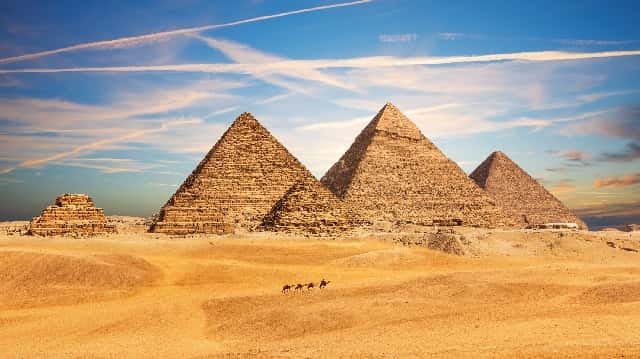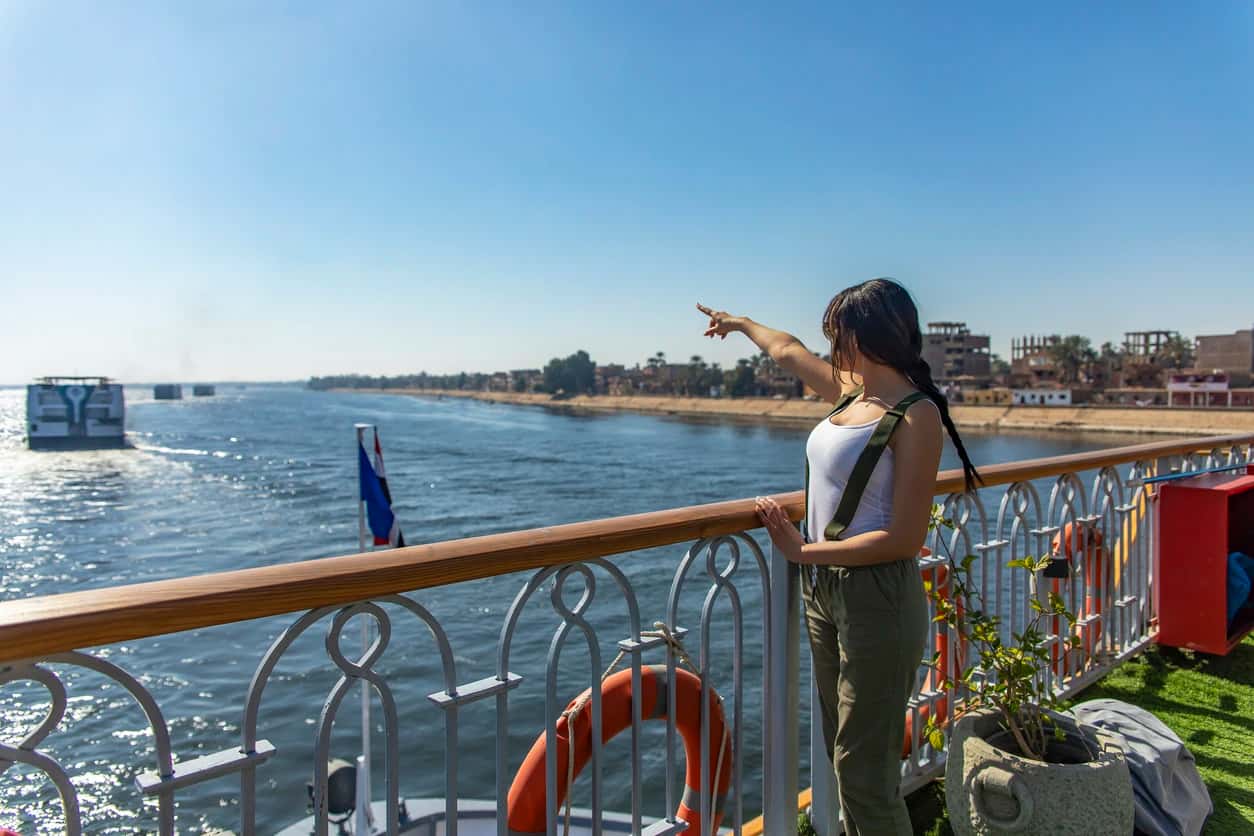
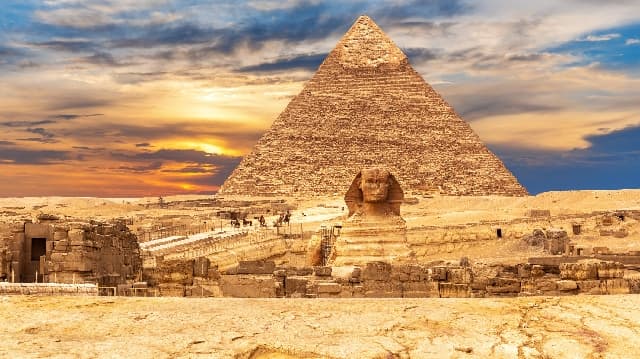
Explore the Great Pyramids of Giza: ancient engineering, hidden chambers, and essential visitor tips all in one guide.
Built during Egypt’s Fourth Dynasty (c. 2600–2500 BCE), the Pyramids of Giza are the last surviving Wonder of the Ancient World. Commissioned by Pharaohs Khufu, Khafre, and Menkaure, these monumental tombs showcase the architectural mastery and logistical capabilities of ancient Egypt.
The Great Pyramid of Khufu, the largest, once rose 481 feet and contains around 2.3 million stone blocks. Constructed in just 20 years, it likely involved a workforce of 10,000 rotating laborers using ramps and sledges. Modern scans have uncovered hidden voids within its structure, deepening its mystery.
More than tombs, the pyramids embody Egypt’s religious beliefs and technological prowess, continuing to fascinate historians and visitors alike.
The pyramids of Giza were the culmination of centuries of architectural evolution, reaching their peak during Egypt’s Fourth Dynasty. Building on earlier experiments, they perfected the true pyramid form pioneered by Pharaoh Sneferu.
Constructed over roughly 100 years, Khufu began the Great Pyramid around 2550 BCE, followed by Khafre (c. 2520 BCE) and Menkaure (c. 2490 BCE). This short period produced some of history’s most enduring monuments.
Khufu commissioned the largest and most complex pyramid. Khafre built the second, slightly smaller and elevated for visual effect. Menkaure completed the trio with a more modest yet elegant pyramid.
The pyramids rise from the Giza Plateau, west of the Nile and near ancient Memphis. This necropolis site, now a UNESCO World Heritage location, was chosen for its spiritual significance and open terrain.
Limestone and granite were quarried using copper and dolerite tools. Stones were moved on sledges over wetted sand and transported by boat via canals linked to a now-lost Nile tributary. Some blocks weighed over 70 tons.
Construction theories include straight ramps, spiral ramps, internal passageways, and water-powered lifts—each aiming to explain how massive stones were raised.
A now-buried Nile branch, the Ahramat Branch, likely connected the quarries to Giza. Builders carved canals and harbors for efficient stone delivery to the site.
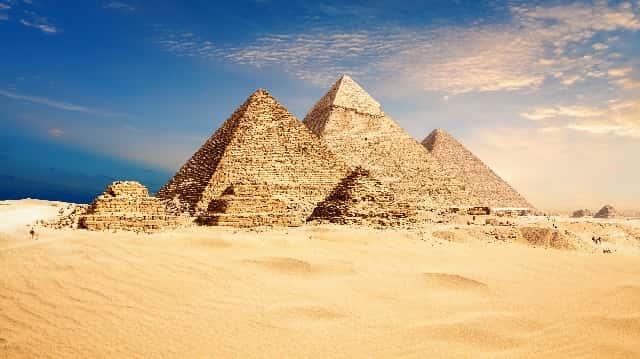
The Pyramids of Giza, built during Egypt’s Fourth Dynasty, represent a pinnacle of ancient architectural and engineering achievement. Constructed as royal tombs—most notably the Great Pyramid for Pharaoh Khufu—they also held deep religious meaning, serving as portals to the afterlife in line with core Egyptian beliefs.
Beyond their spiritual role, the pyramids symbolized the pharaohs’ immense power and the state's organizational strength, requiring vast resources and labor. Today, they remain enduring icons of Egypt’s cultural legacy and continue to captivate global audiences.
The Great Pyramid’s interior includes three simple chambers—the subterranean chamber, Queen’s Chamber, and King’s Chamber—used for rituals tied to the pharaoh’s afterlife. Though stripped of treasures, their design reflects deep religious purpose.
No mummies have been found in the Giza pyramids, likely due to ancient looting, though evidence confirms proper burial rites were performed for Khufu.
The Grand Gallery leads to the King’s Chamber, constructed of red granite and engineered with relieving chambers above to bear immense weight. A granite sarcophagus marks the pharaoh’s intended resting place.
The nearby Great Sphinx aligns astronomically with Khafre’s pyramid during equinoxes, underscoring the sacred geometry of the Giza complex.
The Giza Plateau, on the outskirts of Cairo, is a major archaeological site featuring the Great Pyramid of Khufu, the pyramids of Khafre and Menkaure, and the Great Sphinx. Long a subject of study, it remains central to understanding ancient Egyptian civilization.
Beyond the main pyramids, the plateau includes smaller pyramids, temples, and cemeteries that reflect the era’s religious beliefs and complex social structure. These elements together illustrate the sophistication of Egypt’s Old Kingdom.
The site also offers striking views, where ancient monuments meet Cairo’s modern skyline—creating a powerful contrast that draws both scholars and visitors from around the world.
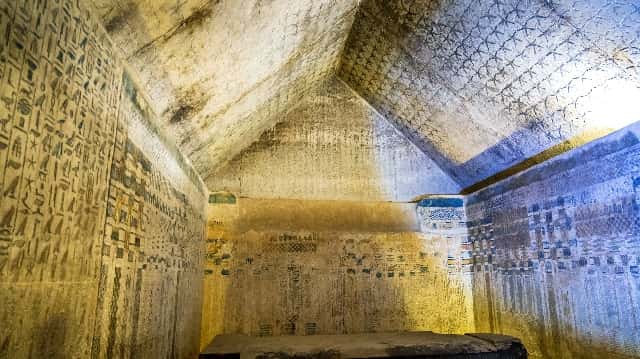
The best time to visit the Pyramids of Giza is from October to April when the weather is cooler. Early mornings and late afternoons offer better lighting and fewer crowds. The site is open daily from 8 AM to 5 PM, with special permits available for after-hours visits. Visitors should arrive early and prepare with water, sun protection, and comfortable shoes.
1- Dress comfortably with sun protection and sturdy shoes.
2- Bring enough water due to limited facilities.
3- Hiring a guide enhances understanding.
4- Respect local customs and dress modestly.
5- Visit early or late for the best light and fewer crowds.
The Great Sphinx, a colossal limestone statue with a lion’s body and a pharaoh’s head—likely representing Khafre—is one of ancient Egypt’s most iconic and mysterious monuments. Its origins and purpose remain debated, enhancing its allure. Despite centuries of erosion, the Sphinx stands well-preserved due to multiple restorations, captivating visitors with its enigmatic expression and monumental scale.
For visitors, photographing the pyramids is essential. The best light occurs during early morning or late afternoon, while Panorama Point offers an ideal vantage to capture all three pyramids in one frame. The site’s contrast between ancient monuments and Cairo’s modern skyline provides striking photographic opportunities, rewarding patience and creativity.
* The Giza Plateau includes the Solar Boat Museum, showcasing an ancient funerary vessel.
* Camel and horse rides offer traditional, scenic ways to explore the site.
* Nearby Cairo’s Egyptian Museum houses extensive artifacts, including Tutankhamun’s treasures.
* These attractions enhance and complement a visit to the pyramids and Sphinx.
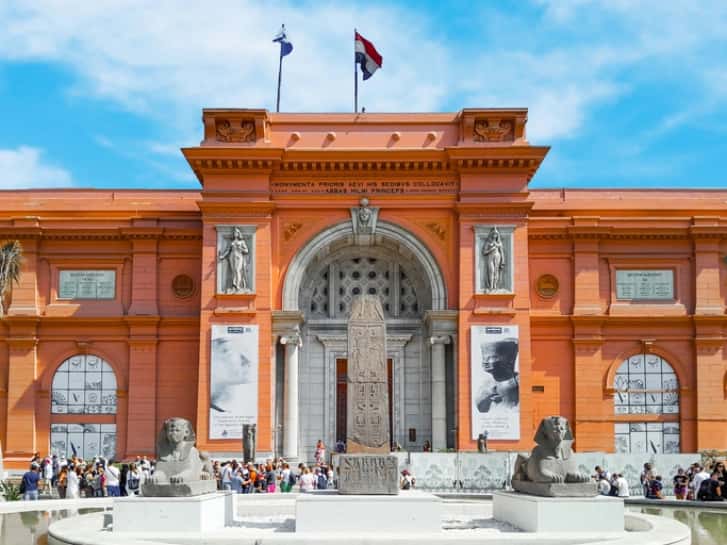
The Pyramids of Giza are ancient marvels showcasing Egyptian engineering and cultural beliefs. Modern research and technology keep unveiling new secrets. Visiting with proper planning and guidance offers a deeper appreciation of their history and lasting significance.
Using ramps, sledges, and boats, ancient Egyptians transported limestone blocks with remarkable precision. Merer’s diary offers key insights into this process.
The Great Pyramids of Giza were built during the Fourth Dynasty of the Old Kingdom of ancient Egypt, roughly between 2600 and 2500 BC. This means they were constructed about 4,500 years ago
The Pyramids of Giza were built by three generations of pharaohs from the Fourth Dynasty of ancient Egypt: Khufu, Khafre, and Menkaure. Khufu built the Great Pyramid, while Khafre and Menkaure each had their own pyramids built at Giza.
It contains three chambers and the Grand Gallery. Though now empty, these spaces were central to royal burial rituals.
No. The main pyramids were looted long ago, but they still served as royal tombs.
ScanPyramids detected hidden structures using non-invasive muon imaging, revealing new voids and corridors.
Efforts include tourism management and digital tools like 3D scans and virtual tours to document and protect the site.
Yes, visitors can enter certain pyramids, such as the Great Pyramid of Khufu. However, access may require additional tickets, and the interior passageways are narrow and steep, which might be challenging for some individuals.
Climbing the pyramids is strictly prohibited to preserve the structures and ensure visitor safety. Photography rules may vary, and it's advisable to check current regulations before your visit.
The cooler months from October to April are ideal for visiting, as temperatures are more comfortable for exploration. Early morning visits can also help avoid large crowds.
The Giza Plateau typically opens daily from 8:00 AM to 4:00 PM. General admission tickets are required, with additional fees for entering specific pyramids. It's recommended to verify current prices and opening hours before planning your visit.
Yes, the Pyramids of Giza are a popular tourist destination with security measures in place. Visitors should stay aware of their surroundings and follow local guidelines to ensure a safe experience.
Plan your luxury trip to the Great Pyramid of Giza with insider tips and explore one of history’s greatest wonders.
